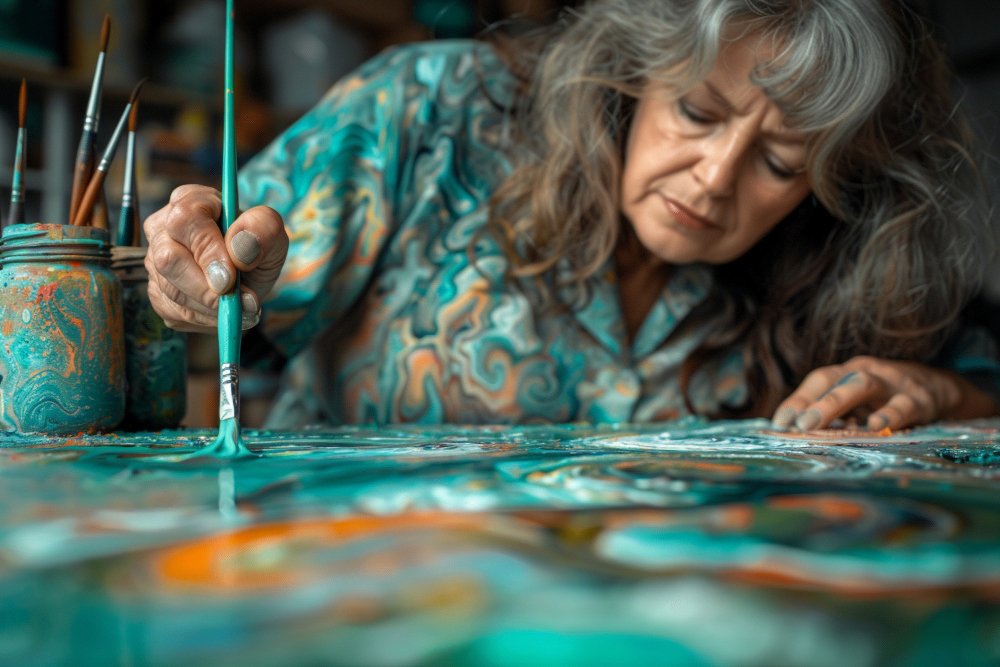The Feminism Effect: How The Art Movement Underscores The Power of Women
Yashaswini Repaka
August 2024
Art speaks volumes. It can encompass many aspects of our daily lives, and urge us to understand how powerful our emotions are through variation. Like the power of a simple brush stroke, feminism throughout modern works encompasses the power of representation, power dynamics, and the identity of the female community. Advocating for the empowerment of women and marginalized groups, feminist art brings together a vibrant community and unites women in girlhood. The feminist movement has significantly shaped contemporary art and continues to impact the art field today, empowering women in every aspect of life.

Emerging in the late 1960’s and 70’s, the feminist art movement was a response to a predominantly male-centric art world. It sought to address issues of gender equality and challenge traditional notions of art. As once stated by female artist Suzanne Lacy, “…the goal of Feminist Art was to “influence cultural attitudes and transform stereotypes.”[1]
Examples of more renowned female artists include Judy Chicago and Miriam Schapiro, spotlighted in the following:
Inspired by the women’s movement and rebelling against the male-dominated scene of their art world, many renowned paintings such as the Dinner Party [1979] which Chicago described as “a reinterpretation of The Last Supper from the point of view of women, who, throughout history, have prepared the meals and set the table” [4]. The Dinner Party celebrated the forgotten achievements of women throughout history. The main focus of the piece is a table with symbolic places for thirty-nine “guests of honor.” Each place setting describes each woman’s achievement. Incorporating elements of a social event with the status and appearance of a banquet, Chicago elevates her guests to the role of heroes, a traditionally male characteristic.
Another renowned piece by Schapiro, DollHouse [1972], which was intended to be a statement on the lives of women and the fact that “there is more to be discovered beyond the female stereotype and opportunities for her to choose to be sexual or glamorous” [5]. The Dollhouse describes how a woman is portrayed on the outside, but if someone got to know them a little better, or “opened the doors of the house”, they would understand her hobbies and personality. Especially in the 20th century, many societal norms looked down upon women making their own choices. So, just like the shutters in the house, it is demonstrated that women have the ability to close or open parts of their lives to other individuals.
Gender equality, racial justice, LGBTQ rights, and other social justice movements often intersect with feminist art. Many artists use their work to shed light on these issues, using their platforms to advocate for change and amplify marginalized voices. For example, American Gothic by Grant Wood reflects concerns about rural life and the rigidity of gender roles[6]. Harlem by Langston Hughes delves into the experience of African Americans in the early 20th century, addressing themes of race and class[2]. Brokeback Mountain directed by Ang Lee portrays a complex and poignant exploration of homosexuality, along with themes of love, identity, and societal expectations [3].
All in all, feminism has played a crucial role in reshaping the art world, challenging traditional norms, and amplifying the voices of women artists. From the feminist art movement of the 1960s and 1970s to the present day, the influence of feminism on art continues to be profound. The feminist art movement has inspired gender, identity, and power dynamics, ultimately enriching and diversifying the artistic landscape. Through these powerful works of art, women across the world feel empowered by the rich intricacies and powerful, emotional advocacy. All it took was a paint jar and a burning passion to represent.
References:
[1]Feminist art movement overview. The Art Story. (n.d.-a). https://www.theartstory.org/movement/feminist-art/
[2]Hughes, L. (n.d.). Harlem by Langston Hughes. Poetry Foundation. https://www.poetryfoundation.org/poems/46548/harlem
[3]IMDb.com. (2006, January 13). Brokeback Mountain. IMDb. https://www.imdb.com/title/tt0388795/
[4]Judy Chicago Art, bio, ideas. The Art Story. (n.d.-b). https://www.theartstory.org/artist/chicago-judy/
[5]Miriam Schapiro Art, bio, ideas. The Art Story. (n.d.-c). https://www.theartstory.org/artist/schapiro-miriam/
[6]The painting. American Gothic House Center. (n.d.). https://americangothichouse.org/american-gothic





